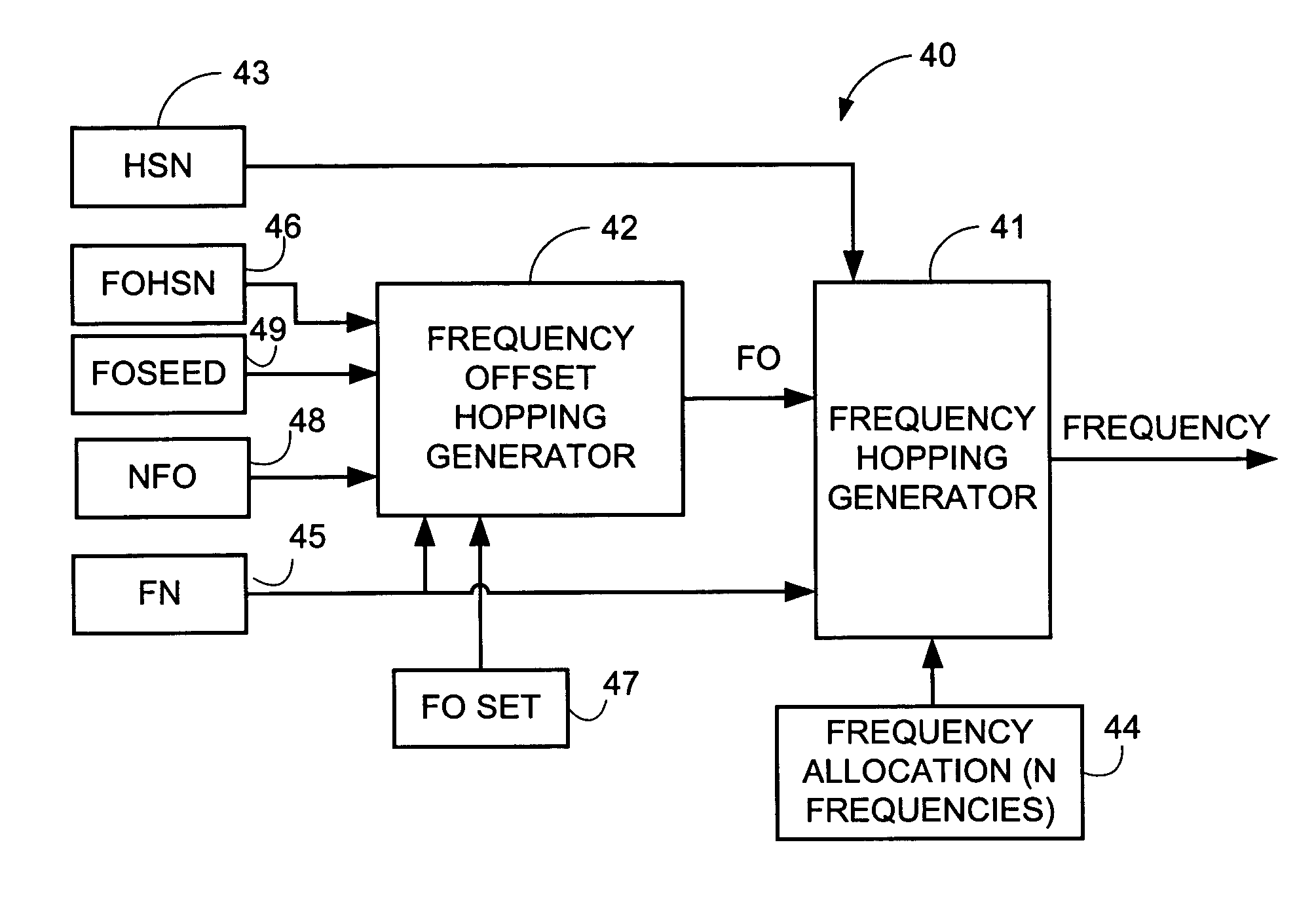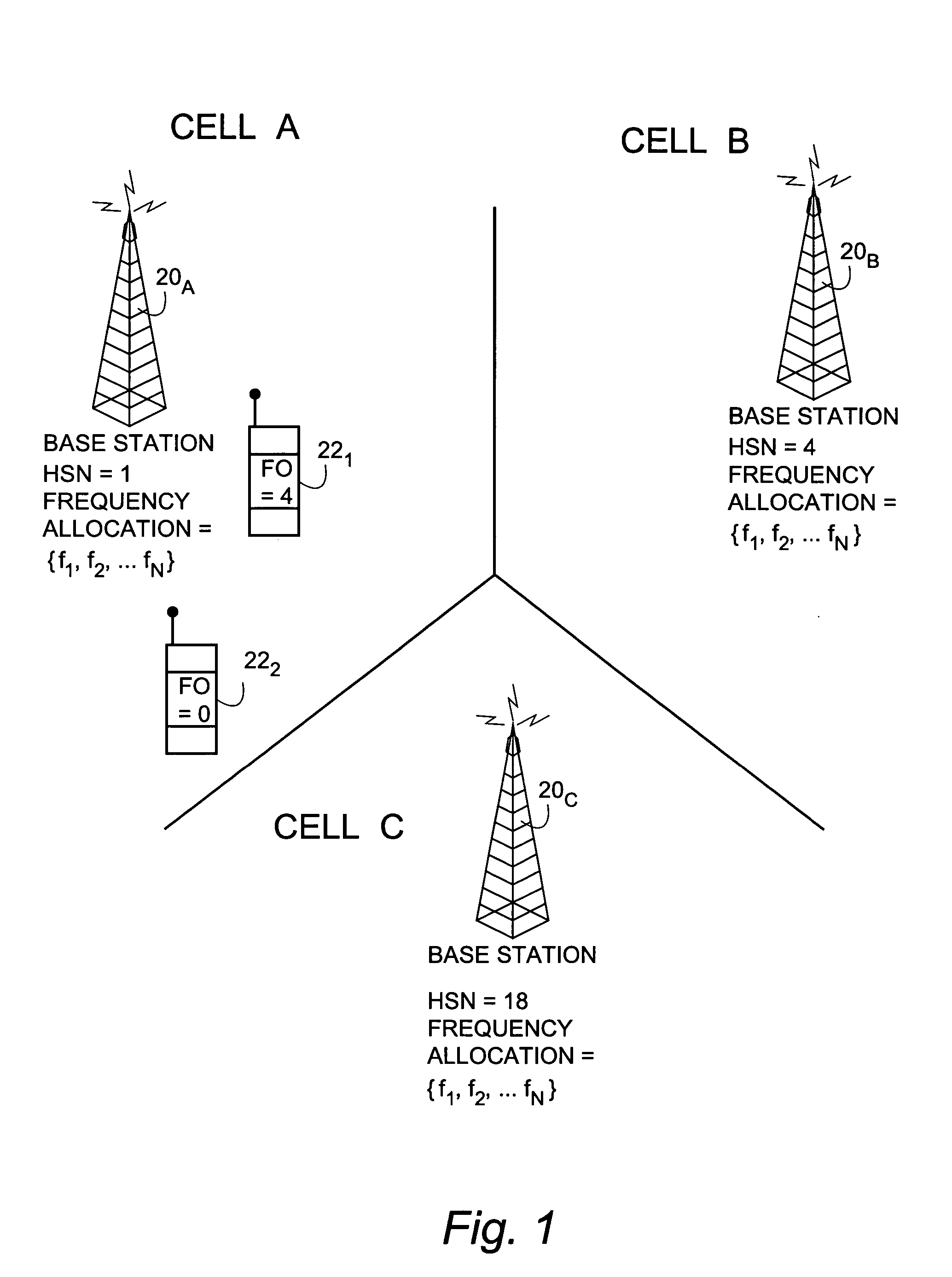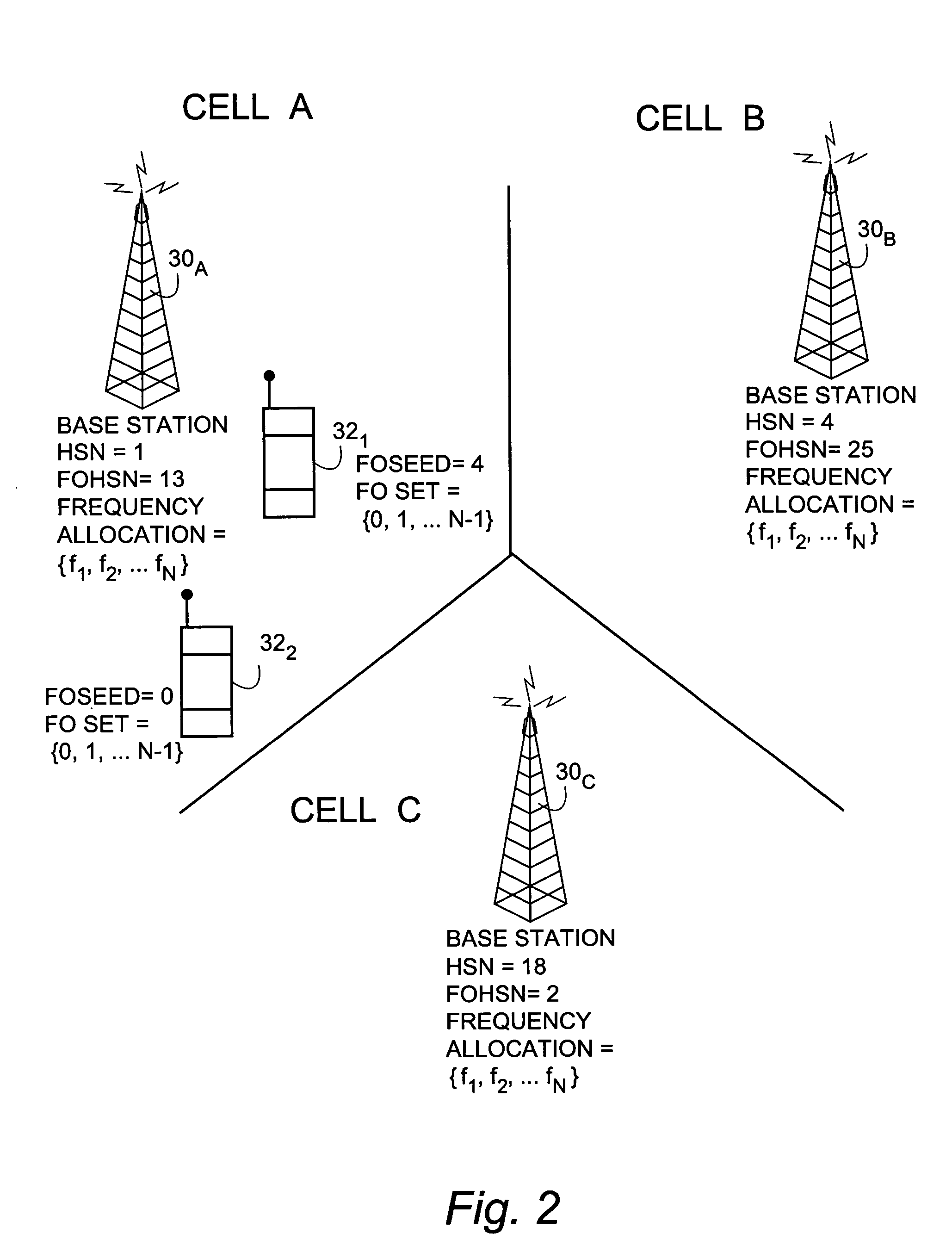Frequency offset hopping for telecommunications
a technology of frequency offset and telecommunications, applied in the field of telecommunications, can solve the problems of increasing the likelihood that the signal will be received correctly, affecting the signal quality of the radio signal, and often subjecting the radio signal to varying degrees of interferen
- Summary
- Abstract
- Description
- Claims
- Application Information
AI Technical Summary
Problems solved by technology
Method used
Image
Examples
examples
FIG. 7A-FIG. 7E; FIG. 8A-FIG. 8E; and, FIG. 9A-FIG. 9E illustrate three separate examples of frequency hopping with the variable frequency offset (FO) facilitated by frequency hopping sequence generation system 40, and particularly by frequency offset hopping generator 42. FIG. 7A-FIG. 7E collectively illustrate a first example; FIG. 8A-FIG. 8E collectively illustrate a second example; FIG. 9A-FIG. 9E collectively illustrate a third example. In all three examples, frequency hopping is performed over N=5 contiguous frequencies, labeled along the vertical (Y) axis as frequencies 0, 1, 2, 3 and 4. The horizontal (X) axis of the figures corresponds to increasing time step (e.g., increasing FN).
In the examples, for sake of simplicity there is a one-to-one mapping of frequency offset index (FOI) to frequency offsets (FOS) as follows: FOI=0 maps to FO=0; FOI=1 maps to FO=1; FOI=2 maps to FO=2; FOI=3 maps to FO=3; and FOI=4 maps to FO=4.
Each example features two frequency hopping sequen...
PUM
 Login to View More
Login to View More Abstract
Description
Claims
Application Information
 Login to View More
Login to View More - R&D
- Intellectual Property
- Life Sciences
- Materials
- Tech Scout
- Unparalleled Data Quality
- Higher Quality Content
- 60% Fewer Hallucinations
Browse by: Latest US Patents, China's latest patents, Technical Efficacy Thesaurus, Application Domain, Technology Topic, Popular Technical Reports.
© 2025 PatSnap. All rights reserved.Legal|Privacy policy|Modern Slavery Act Transparency Statement|Sitemap|About US| Contact US: help@patsnap.com



